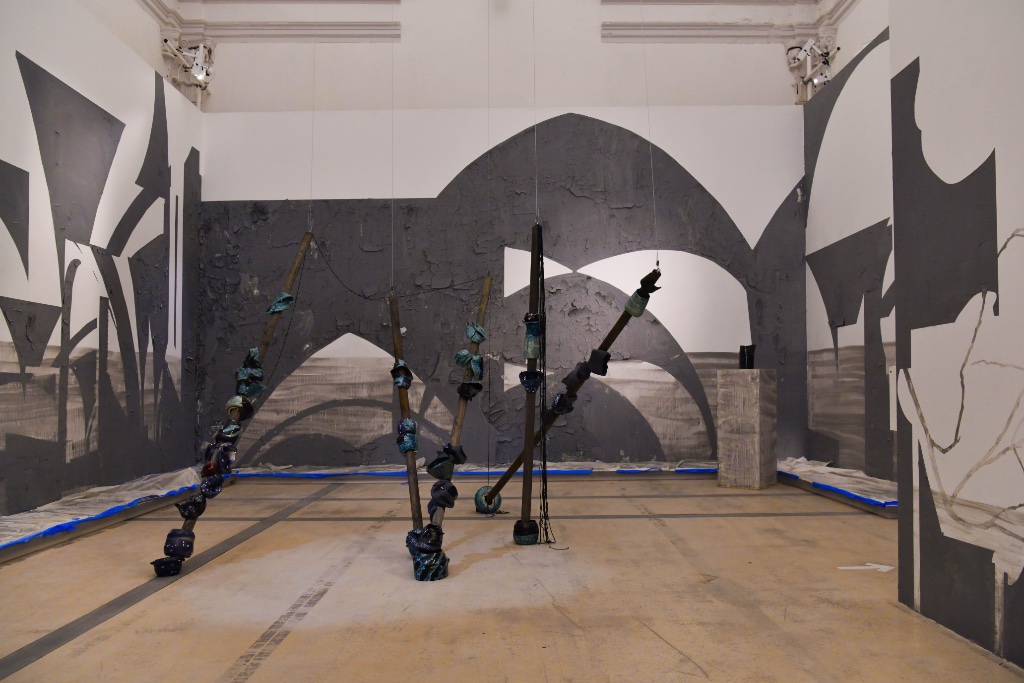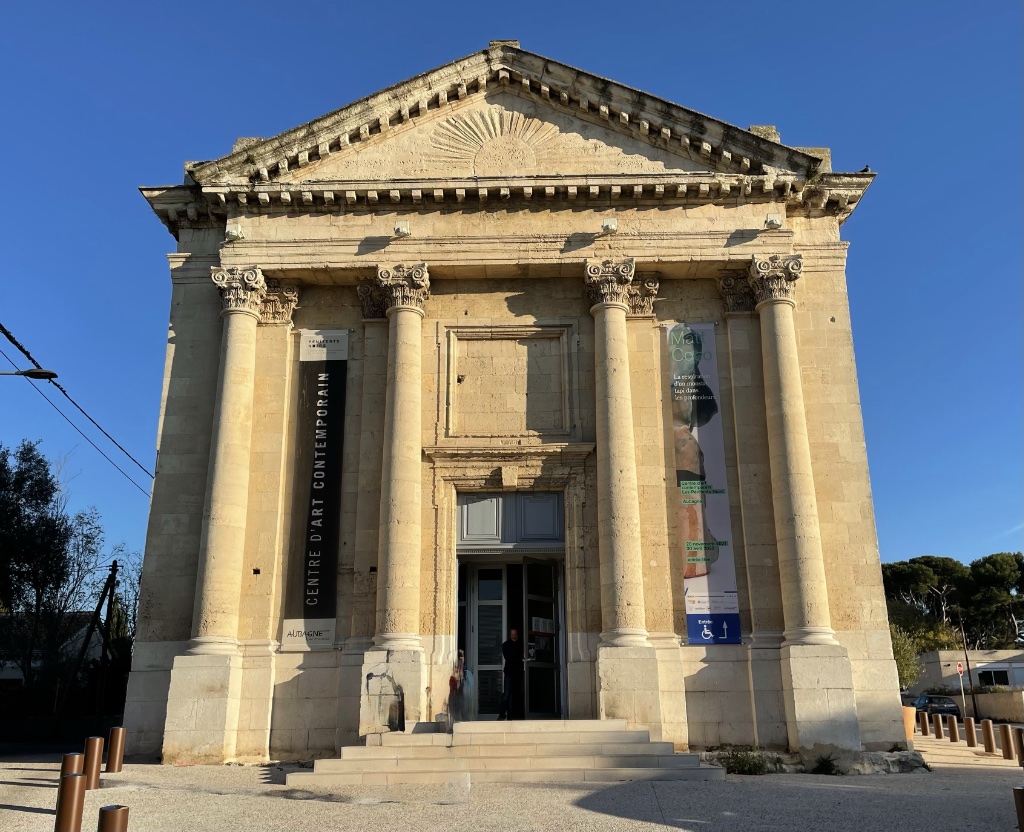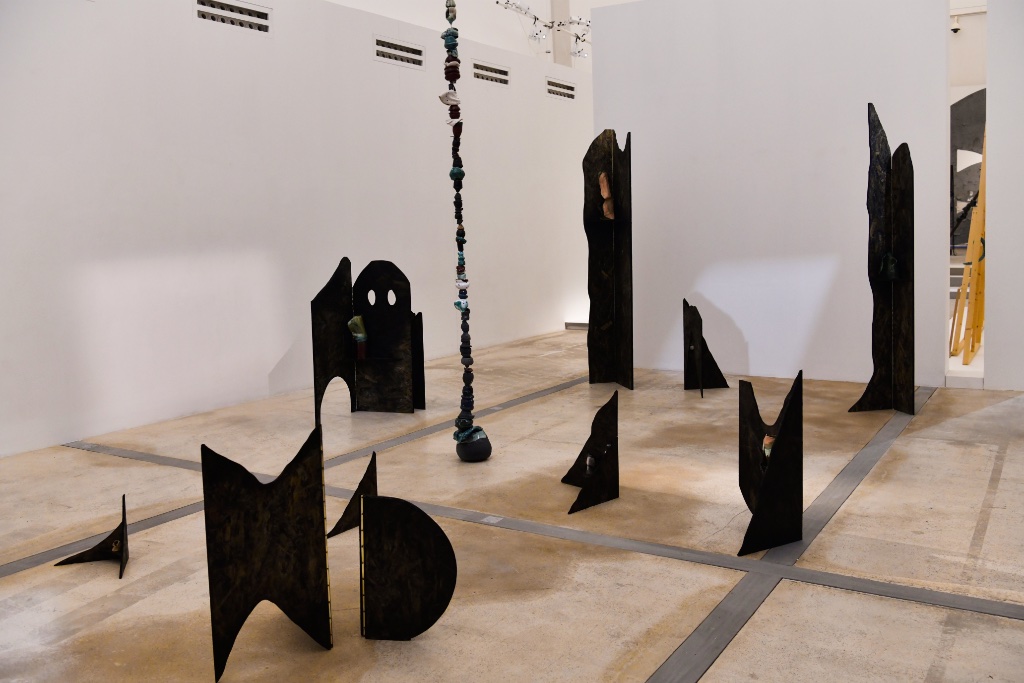
The French artist Matt Coco often takes a natural or human disaster as a starting point for her installations. She sees catastrophes not just as an endpoint but also as a potential new beginning. “I try to transpose that moment when actuality breaks down into a poetic object,” she says. Her current exhibition, “Matt Coco: The Respiration of a Monster Lurking in the Depths” is so-called because she was interested in the “poetic” image of a frightening beast like the Loch Ness monster lurking in deep waters, common to many cultures around the world.
The design of each of her exhibitions is also influenced by the history and architecture of the venue it is held in. The site of this show, the Pénitents Noirs Contemporary Art Center in the heights of Aubagne, near Marseille, in the former Pénitents Noirs Chapel, provided plenty of inspiration for the exhibition.

Les Pénitents Noirs was one of three lay brotherhoods – along with Les Pénitents Blancs and Les Pénitents Gris – founded in Aubagne in the 16th and 17th centuries. Each of the brotherhoods – black, white and gray – had its own chapel. The members of these devout charitable orders processed through the city in rough robes, their faces covered by hoods, sometimes practicing self-flagellation. All three orders were banned during the French Revolution.
In the 18th century, the Pénitents Noirs Chapel, enlarged many times over the centuries, was endowed with a handsome neoclassical facade inspired by the Pantheon in Rome. During World War I, by which time it was abandoned and deconsecrated, it was used as soldiers’ quarters.
Coco’s site-specific installations evolve and change with each new venue. As an artist in residence at the Pénitents Noirs, she returned several times from her home in Lyon to develop this show. The pieces in each installation, she says, “can be understood as a language to be interpreted, underscored by clamor, disruption, change, pressure, friction.”

The first room of the exhibition in the bare, high-ceilinged chapel is filled with jagged wooden structures painted black with India ink, immediately suggesting a ghostly graveyard. Ceramic objects attached to each hinged black object provide the only color in the room.
The objects in the show, she says, have a “hybrid status encompassing reproduction, the existence of opposites and the possibility of a differential gap – a system in which place, event and time coexist.”
The second room features an installation of frames that seem to be waiting for paintings to fill them, which might be the canvases on the opposite wall, while the third and final room is filled with jagged black architectural elements (see photo at the top of this page) echoing the vaulted structure of the chapel’s ceiling. They look like they have survived a flood – perhaps the deluge that is part of the founding myth of so many religions. The gray material painted on the walls is caked and peeling off near the floor, as if damaged by receding waters.
Sound is also part of many of Coco’s installations, in this case the tolling of the chapel’s long-silenced bells, which can be heard only after a visitor has been in the building for 15 minutes.
After seeing this evocative show, visitors are left to wonder what has become of the beast lurking in the depths after the waters of the deluge have subsided.
Favorite